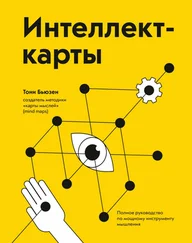2. Put Yourself in the Other Person’s Shoes
This doesn’t just mean empathizing with other people’s views – try and see things from other creatures’ points of view too. Whenever you see an animal, do as Ted Hughes did, and try to see the world (and yourself!) from its point of view. Use your imagination to think yourself into the place of things – for example, what is the point of view of the spoon with which you eat your cereal? What is the point of view of the ball you are about to throw? What is the point of view of the hat you are putting on? What is the point of view of the car you are driving? What is the point of view of the insect you are observing? What is the point of view of the star you are seeing?
3. Reverse your Life!
Look at your life and all its aspects and activities, and consider, one by one, reversing everything! This exercise will give you a fresh look at who you are and what you do, and will allow you to make changes where appropriate, and to leave things as they are when you realize they are satisfying and rewarding to you. Consider your clothes, friends, foods, locations, cultural activities and athletic pursuits. If you go to the gym in the evening, try going before breakfast. Swap rooms around, so that you sleep in your living room and live in your bedroom.
You’ll probably decide to leave much as it is; similarly you’ll probably decide that a number of things, when reversed, could make your life much more happy, creative and rich.
4. Try New Combinations of Things
Rearrange things in your home and daily life. Try out new types of food; consider decorating a room in colours and fabrics you would not normally think of using; rearrange the furniture; take up a new hobby and expand your social circle.
5. Learn to Tell Witty Jokes
If you think about it, some of the best jokes are where two unconnected things are linked together in a new and hilarious way, or where the standard concepts are reversed in a manner that has you rolling on the floor. Humour is an extremely creative activity, so the more you can be with people who are regularly joking and laughing, the better it will be for your own Creative Thinking Power.
6. Practice Making Connections
In your daily life, randomly pick two very different objects and try to make a witty or humorous connection between them.
How, for example, would you link the concepts of boxing and insects? Mohammed Ali managed it, with the phrase ‘ Float like a butterfly, sting like a bee! ’
7. Link the Different Activities in your Life
Thomas Edison is a marvellous example of this. Edison’s scientific and experimental laboratory was a giant barn-like building with many different tables and benches, each one containing a different project on which he was working.
Edison designed his workshop in this way to allow each one of his ongoing projects to connect, in his mind, with all the others. He considered that anything he did in one experiment might have some unexpected connection with the others. He found that this was tremendously useful in helping him create new ideas.
Using this approach will help you realize that your life is much more integrated than you may have thought, and it will also give you the opportunity to make new creative additions to it.
8. Play Novel Combination Games
At parties, or on festive occasions, try asking all the participants to find the most unusual connections between any given objects in a situation.
9. Use the Techniques Learnt Here to Create Some More Original Ideas!
Skim through the Power of Creative Intelligence and make new associations between each and every chapter. Then try reversing your thoughts!
The ideas in this chapter are summarized in Plate 22.
3.8
Your Brain: The Ultimate ‘Association Machine’ – Expansive and Radiant Thinking
In this chapter you are going to learn the fundamental secret of all Creative Thinking, and are going to play Creative Thinking Games that will give you extraordinary insights into the workings of your Creative Brain, and of its potential and power.
By now you have probably realized that there is one key to all the ideas that have been discussed in the previous chapters – ASSOCIATION.
Fluency, Flexibility, Originality and Reversal Techniques are all based on this magical word. It is the secret that all great Creative Geniuses used to accomplish their feats.
Association holds the secret of the way your brain fundamentally thinks. It is the secret that, once you know it and know how to use it, will reveal limitless creative treasure-troves for you to explore for the rest of your life.
This chapter is therefore devoted to an expanded Creativity Workout, with exercises that will entertain, challenge, inform and amaze you.
Creativity Workout
1. Exercise your Creative Power of Fluency
Speed-read through each of the Creativity Workouts in the previous seven chapters and put a little star by any exercise you can identify which contains Association as its main element.
2. Association – Self-exploration
In this Association game, imagine that you are a super-computer. You will be asked to access a piece of information, and to examine a number of things about it and yourself. When you have looked at the ‘data’ and ‘accessed’ it, let it drift around in your head for a little while, exploring the Associations that creatively spring to mind.
When you have been given the piece of data (it is a name), you need to ask yourself the following questions:
Was I able to recognize the owner of the name (i.e. to access the data) successfully?
How long did it take me to ‘get’ the information?
Was the piece of data I retrieved represented in my brain by words or an image?
Where was the image I accessed?
Was there any colour in it?
If there was colour, where did it come from?
With what did I see it?
What were the Associations that radiated from it?
When you are ready, click here and you’ll find a name in big bold letters. As soon as you have registered it, close the book, and let the Association drift. Then answer the questions you have just read.
Most people answer ‘Yes’ to the first question. To the second question, they often snap their fingers, meaning instantaneously.
Just think for a minute about what this finger-snap really means. They are saying that from a trillion-bit database (their phenomenal memories of their life to date) they have randomly accessed an entire database ‘just like that’! If you can explain how the human brain does this amazingly complex process of re-creating images, you’ll get a Nobel Prize ‘just like that’!
If you can explain where the person named had been hiding all the time until you decided to hook (link) him or her out, you’ll get another Nobel Prize! Moreover, if you can explain where the person actually is in your head, where the associated colour comes from, how you can see the person’s image, and with what (it is obviously not your eyes), you’ll get another and another and another Nobel Prize!
When you are chatting over tea or coffee, or with friends in the pub, your and your friends’ brains are doing a series of associative tasks at such lightning speed and with such incredible efficiency and smoothness, you don’t even realize that what you are doing is something that no super-computer can even begin to do, and which none of the world’s greatest scientists can yet explain.
Your brain is an associative miracle! As you will recognize, the exercise you have just done is similar to the ‘FUN’ exercise you did in Chapter 3.3, and is another example of how your brain creates vast internal Mind Maps that are infinite in their potential to expand.
Читать дальше






